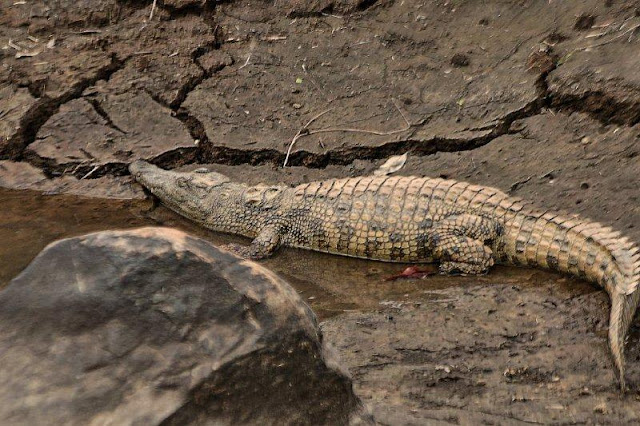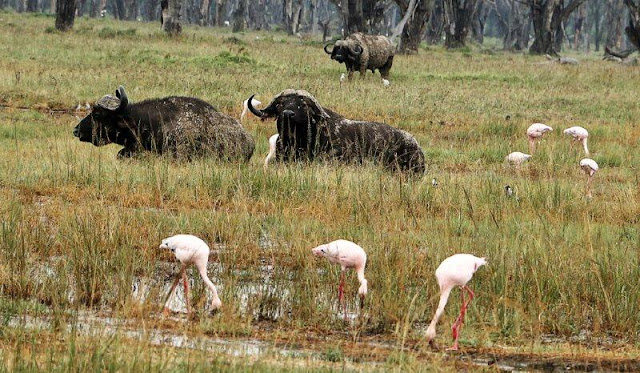The bottom line was being able to get some decent photos in one of the most sort after wild life destinations in the world thus ticking off one in my bucket list.
The Masai Mara National Reserve is each year visited by thousands of tourists, who come here to watch the many different wildlife and bird life species in the reserve. The reserve is especially famous for the high amount of predators, such as lions and cheetah, and the 1.5 million wildebeest which migrate through the Mara and cross the crocodile infested Mara river.
The Masai Mara National Reserve as it appears today was established in 1961, and covers 1,510 sq km (583 sq miles.
When visiting the Masai Mara you are likely to see the famous Big Five: lion, leopard, elephant, rhino and buffalo. Especially lions are common here, and have grown relatively accustomed to their two-legged visitors, which makes them easier to spot. The Mara Plains are teeming with wildebeest, zebra, giraffe, impala and Thomson's gazelle. Also cheetahs, hyenas and jackals are seen regularly in the reserve. In the Mara River large amounts of hippos and crocodiles are enjoying their lives - the crocodiles are especially happy in July and November when thousands of wildebeest migrate across the river causing a sumptuous feast for the hungry crocodiles. Bird life in Masai Mara are abundant and diverse. Species such as eagles, ostriches, storks and vultures are among the more than 50 different birds of prey.
This is the Mara entrance we used called Oloolaimutia

Lions were in abundance in Mara
Majestic,,...









Female Sooty Chat
A Common Male Ostrich
Masai Giraffe


Gathering of Wilder Beast



A male GREATER kUDU
Impala
Topi

Kob

Bohar Reedbuck

Grant's Gazelle

Hadada Ibis
Elephants were scarce....
A family of Hippapotamous

A Juvenile Nile Crocodile
African Helmeted Guinea Fowl

Southern Grosbeak Canary
wild Buffaloes
Rock Agma Lizard
Woodland Kingfisher

A Cheeta just after a kill

White Backed Vulture
Ruepplells Griffon Vultures


An Albino ZEEBRA with the common


Superb Starling


Very Rare Serval Cat

Black Backed Jakal


Red Billed Ox pecker

Seeing a Leopard in Mara is very rare. and a big achievement ...
A black Rhino in Mara

Lake Nakuru is one of the Rift Valley soda lakes at an elevation of 1,754 m (5,755 ft) above sea level. It lies to the south of Nakuru, in the rift valley of Kenya and is protected by Lake Nakuru National Park.
The lake's abundance of algae used to attract a vast quantity of flamingos that famously lined the shore. Other birds also flourish in the area, as do warthogs, baboons and other large mammals. Eastern black rhinos and southern white rhinos have also been introduced.
The lake's level dropped dramatically in the early 1990s but has since largely recovered. In 2013, the lake received an alarming increase in the water levels that led to the migration of flamingos to Lake Bogoria in search for food supply. .[2]
Nakuru means "Dust or Dusty Place" in the Maasai language. Lake Nakuru National Park, close to Nakuru town, was established in 1961. It started off small, only encompassing the famous lake and the surrounding mountainous vicinity, but has since been extended to include a large part of the savannahs
Speckled Pigeon


Little Weaver

Mantled Colobus Monkey

Lake Nakuru

Rothchild's Giraffe in Lake Nakuru


Lake Nakuru



Hamerkop

White Rhinos in Lake Nakuru

Augur Buzzard
Male Sooty Chat


African Wattled Lapwing

Yellow Billed Stork





















































No comments:
Post a Comment